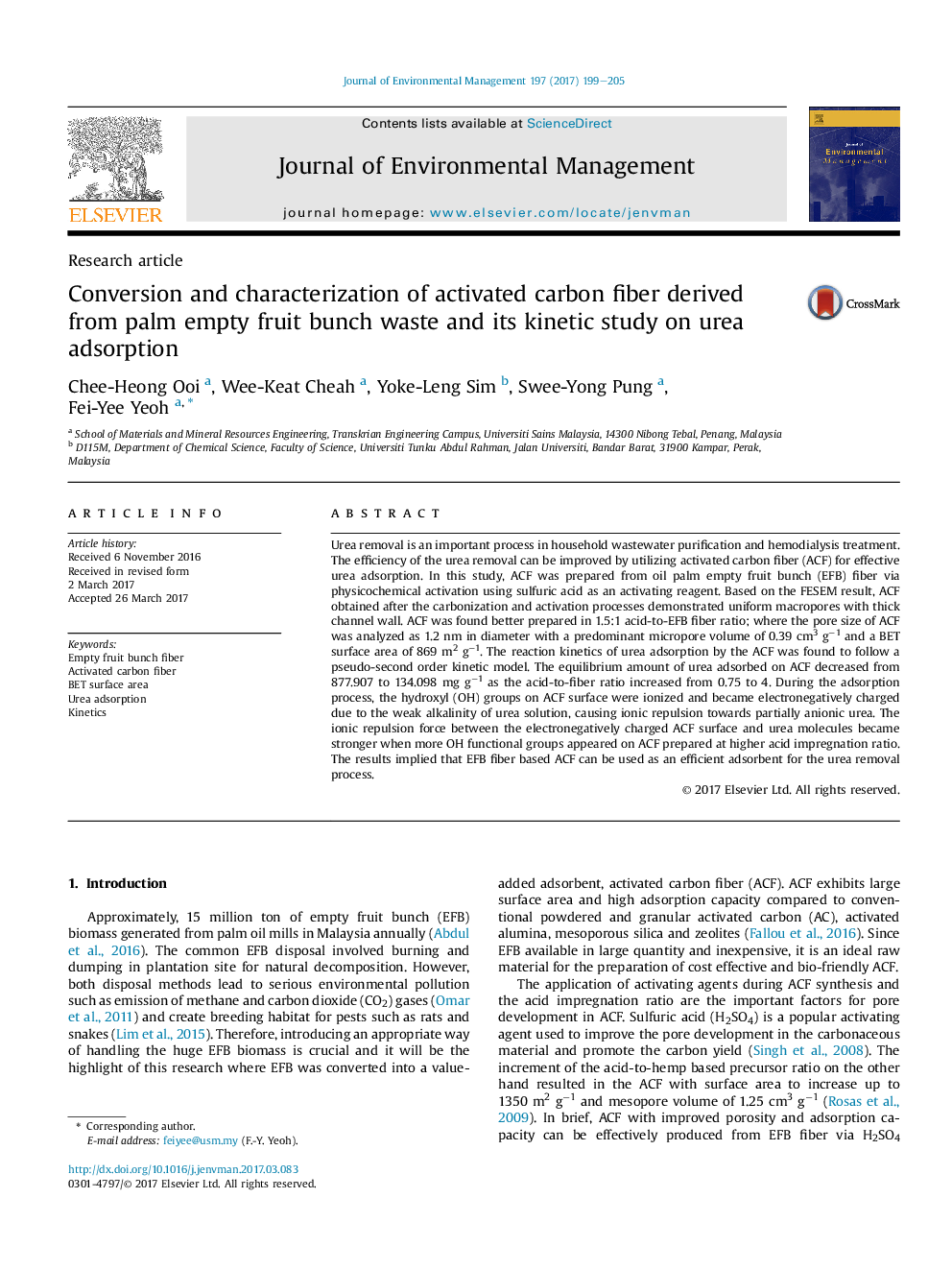| Article ID | Journal | Published Year | Pages | File Type |
|---|---|---|---|---|
| 5116946 | Journal of Environmental Management | 2017 | 7 Pages |
Abstract
Urea removal is an important process in household wastewater purification and hemodialysis treatment. The efficiency of the urea removal can be improved by utilizing activated carbon fiber (ACF) for effective urea adsorption. In this study, ACF was prepared from oil palm empty fruit bunch (EFB) fiber via physicochemical activation using sulfuric acid as an activating reagent. Based on the FESEM result, ACF obtained after the carbonization and activation processes demonstrated uniform macropores with thick channel wall. ACF was found better prepared in 1.5:1 acid-to-EFB fiber ratio; where the pore size of ACF was analyzed as 1.2 nm in diameter with a predominant micropore volume of 0.39 cm3 gâ1 and a BET surface area of 869 m2 gâ1. The reaction kinetics of urea adsorption by the ACF was found to follow a pseudo-second order kinetic model. The equilibrium amount of urea adsorbed on ACF decreased from 877.907 to 134.098 mg gâ1 as the acid-to-fiber ratio increased from 0.75 to 4. During the adsorption process, the hydroxyl (OH) groups on ACF surface were ionized and became electronegatively charged due to the weak alkalinity of urea solution, causing ionic repulsion towards partially anionic urea. The ionic repulsion force between the electronegatively charged ACF surface and urea molecules became stronger when more OH functional groups appeared on ACF prepared at higher acid impregnation ratio. The results implied that EFB fiber based ACF can be used as an efficient adsorbent for the urea removal process.
Related Topics
Physical Sciences and Engineering
Energy
Renewable Energy, Sustainability and the Environment
Authors
Chee-Heong Ooi, Wee-Keat Cheah, Yoke-Leng Sim, Swee-Yong Pung, Fei-Yee Yeoh,
